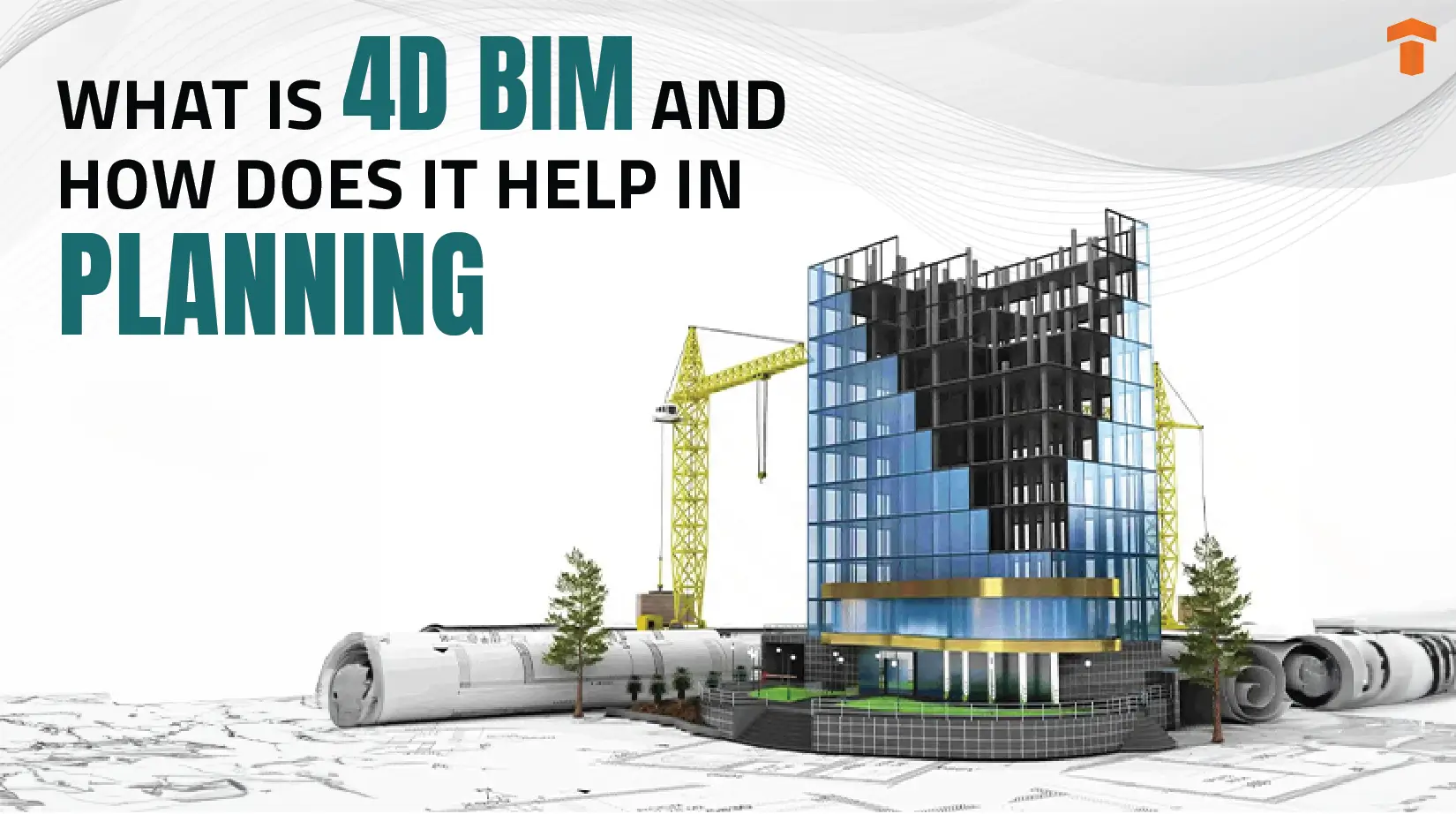What is 4D BIM and How Does it Help in Planning?
Mar 06, 2024
Category: BIM / Digitization / Automation
Admin

Recently, the construction industry has seen new technologies. They have transformed project management and greatly improved building. 4D BIM is one such technique. By incorporating start and finish date data for the delivery and installation of building components, 4D BIM modeling visualization highlights each component’s significance in connection to the project as a whole.
4D BIM is gaining popularity in the market by offering concrete and abstract advantages. It has eliminated the confusion caused by the lack of visualization that was a problem with traditional building sequence scheduling. Let’s explore the way it helps architects in project planning in the building industry.
What is 4D BIM?
Four-Dimensional Building Information Modeling, or 4D BIM, incorporates time as a fourth dimension, making it possible to see construction sequences throughout time. By imitating the building process, supporting schedule optimization, detecting conflicts, and anticipating any delays or conflicts, it improves project planning and management.
4D BIM combines 3D BIM models with time and scheduling. By combining 3D models with the existing project schedule, it makes it easier to visualize each stage of the project. It shows the importance of each part to the whole project. It also includes the start and end dates for delivering and installing those parts.
| Also Read: What Are BIM Dimensions? 3D-10D Explained
How Does 4D BIM Help in Planning?

The 4D BIM makes planning simpler and convenient for users. By offering enormous advantages to building projects, it has completely changed the construction sector. This relies on the following factors:
1. Enhanced Comprehension of the Project
Stakeholders can see what comes next with look-ahead scheduling due to 4D visualization. Adding real mapping data to schedules and plans is particularly significant in this case. It provides a truly realistic picture of what will happen next.
A better understanding of the project enables remote stakeholders to give on-site teams more accurate insights. This ensures that all teams are ready for upcoming installations. It also helps find errors or conflicts in the schedule before they cause blunders, delays, or safety risks.
2. Time and Cost-efficient
4D BIM reduces the need for many meetings. They are to make sure everyone agrees. It does this by giving all stakeholders access to construction project info. Every project stakeholder will stay one step ahead of the actual construction stage due to construction sequencing.
This results in significant time savings for all project participants. Schedule optimization using 4D BIM also makes it possible to do away with any pauses and starts in the project’s execution. Planners can compare actual efficiency rates with the sequencing information.
3. Optimized Scheduling
Project managers and other stakeholders can see chances to optimize the schedule. They can also identify areas of a project that may face delays. Integrating the schedule involves aligning not just with what was planned, but also with what was built.
Additionally, stakeholders may visually verify the process and verify that the project is being sequenced correctly. Thus, 4D BIM facilitates identifying potential scheduling conflicts and bottlenecks, allowing for adjustments to streamline the construction process.
4. Improved Visualization of Construction
The creation of images for project planning may be greatly aided by 4D building information modeling. Managers may speed up the schedule and ensure consistency. They can do this by comparing the planned and actual construction phases.
When working on the current site, 4D BIM might assist in coordinating the actions of the contractors and the other members of the team. Thus, it enables visualizing the construction sequence over time, providing clarity on project milestones and dependencies.
5. Reduced Clashes
It produces data on construction product timetables and sequentially develops a graphic. 4D BIM scheduling includes many time details. These include lead times. They also cover construction and installation durations, drying and mixing periods, and links to other goods. They apply to many building parts.
Thus, by overlaying construction activities with the building model, clashes between elements can be detected and resolved early, minimizing rework and delays. Early design phase identification and resolution of conflicts results in reduced rework, simpler planning, and smooth construction.
| Read More: What is the IFC File Format in BIM?
Conclusion
It is evident that 4D BIM is changing the construction sector. Adding 4D scheduling to time-rich 3D BIM models guarantees better change order management. This applies to both project costs and scheduling. With the integration of cloud technology and BIM, stakeholders may access data on any device, from any location.
Throughout the project, make informed choices. Get the most stakeholder cooperation. Revolutionize your planning and scheduling. Research shows that businesses that use 4D BIM are more likely to get new business and finish projects on time. This is true even in an industry where more than 50% of projects go past their deadlines.
About TechnoStruct Academy
TechnoStruct Academy is the educational arm of TechnoStruct, LLC, a registered design engineering firm based in California. It offers specialized BIM training programs for architecture, MEP, and BIM Management.
Our BIM Certification Courses:
BIM-Ready+: Become a BIM Management professional specialized in managing all ASMEPF projects working with open BIM and interoperability with a credible BIM Manager Certification.
BIM-Ready Complete: Become a BIM Engineer specialized in all ASMEPF (Architectural, Structural, Mechanical, Electrical, Plumbing, and Fire Protection) disciplines working with open BIM and interoperability.
BIM-Ready (Arch+Structure): Specialize in BIM Fundamentals, Conceptual Design, Sustainable Design, Design Development, and Construction Documentation in the BIM Environment with this BIM Architect Course.







